Join More Than 50,000+ Subscribers and get latest camera news and rumors
NEW CAMERA VIDEOS ON YOUTUBE
Download Our Android App
|
By admin, on May 23rd, 2019
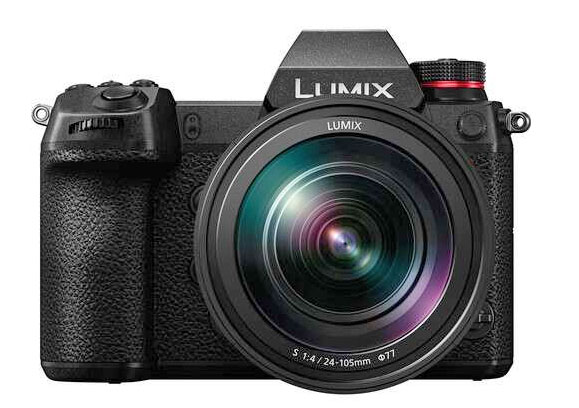
According to latest rumors, Panasonic is rumored to announce a new L-mount camera on May 31, 2019. The camera is Video oriented camera / it is said to be Cinematography dream gear.
Initial Set of Rumored Specification of upcoming L-Mount camera
Panasonic L-Mount Camera Rumored Specification
It’s L-mount
New Full Frame sensors
And so much more…
Cinematography dream gear.
We have to wait for more information, the information is coming from a low-credible source to take it as grain of salt.
Check out Ongoing Featured and Lightning Deals at Amazon.com | Amazon.UK | B&H Store
Follow us on our social pages FACEBOOK | TWITTER | INSTAGRAM, Or subscribe us via Email or Push Notification You Can also Download our Android App
By admin, on May 22nd, 2019
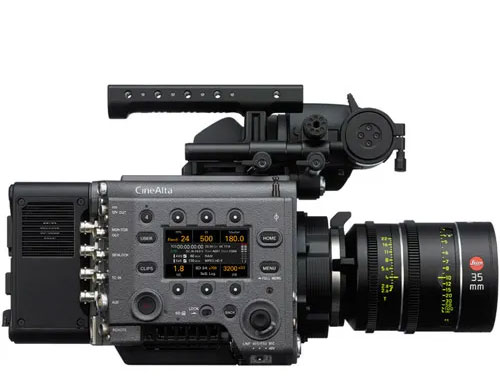
Sony is conducting a press conference on May 31, 2019. According to latest rumors. Sony may announce a new Cinema Camera on that day.
However, we don’t have any confirmed set of information coming from trusted sources . So, take the information with grain salt.
Follow us on our social pages FACEBOOK | TWITTER | INSTAGRAM, If you have time –>see more Sony Alpha Rumor
source SAR
By admin, on May 22nd, 2019
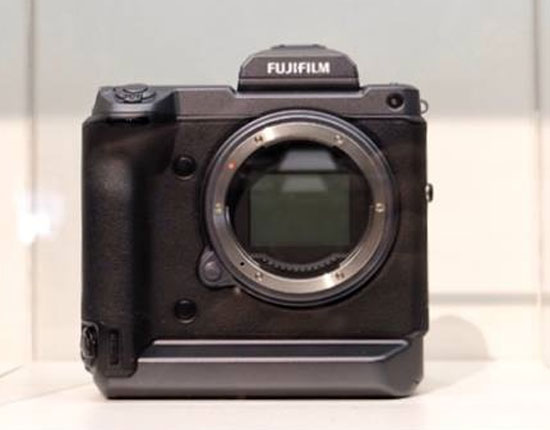
Finally we have the full specification of the upcoming Fuji GFX100 camera, the announcement is about to happen in next two days. Take a look at the detailed specification of the upcoming camera.
Fuji GFX 100 Full Specification
- Equipped with a backside illuminated CMOS sensor with 120 million pixels
- High-speed image processing engine “X-Processor 4”
- Achieves high-speed AF with up to twice the speed of the current model and excellent in moving object tracking
- 3.78 million image plane phase difference pixels are placed on the entire surface of the image sensor (coverage ratio about 100%)
- The accuracy of “face and pupil detection AF” has dramatically improved
- In addition to face detection of objects farther away, it is also possible to achieve high followability even when the face turns sideways or is blocked by an obstacle.
- Equipped with a 5-axis camera shake correction mechanism in the body that has an effect of up to 5.5 steps
- Equipped with 4K / 30P video shooting function
- Recording to an SD card 4K 30p 10bit 4: 2: 0, recording to an external media via HDMI 4K 30p 10bit 4: 2: 2
- The first “GFX Series” to be equipped with “ETERNA” mode
- In addition to 3.2 type back liquid crystal monitor for three directions tilt, we adopt 2.05 type back sub monitor newly
- The newly installed 1.80 top screen sub LCD monitor can use “Virtual dial mode” to display dial design
- Newly developed 5.76 million dots organic EL electronic view finder
- View finder magnification 0.86 times, optional EVF tilt adapter “EVF-TL1” can be attached
- It supports “16bit RAW” “16bit TIFF” recording
- Newly developed Smooth Skin Effect, a new function that automatically performs skin retouching
- We realize small size, light weight of thinnest part 48.9mm, weight approximately 1400 g (we include two pieces of batteries, memory card, electronic view finder)
- High dust and water proof performance and low temperature resistant structure with 95 places sealing
- First to support “IEEE 802.11ac” as “GFX series”
- Since two “NP-T125” can be mounted, approximately 800 images can be taken when using the rear LCD monitor
- Power supply and charge from USB terminal is possible
According to the specs the AF accuracy is greatly improved, Face and eye detection is also greatly improved. So. let wait
Join Fuji Rumors at Facebook
STAY WITH ON FACEBOOK | TWITTER | INSTAGRAM to get live news + Fuji rumors 24X7
By admin, on May 21st, 2019
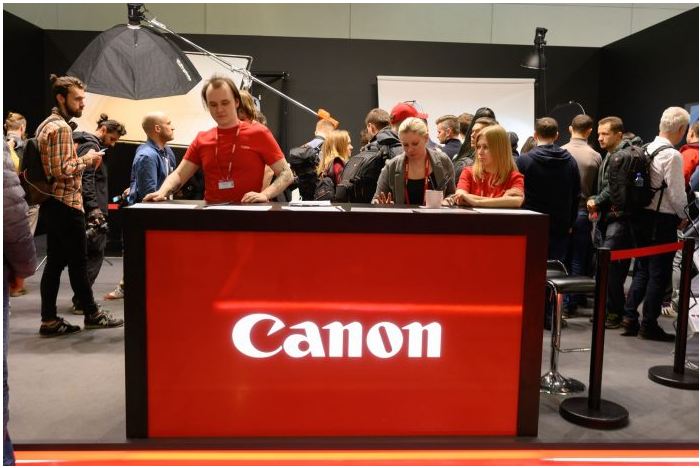
In an interview Canon representatives, clearly told photo.ru the real reason behind the 4K cropped mode of the Canon cameras and much more…
Major Points of the interview
1. Reason Behind Canon Cropped 4K video mode in Canon Cameras
Canon do not want Kill their Cinema Lineup by putting class leading video specs in DSLR or Mirrorless.
We can put 4K from a full frame in the SLR and mirrorless, but we do not want to “cannibalize” our own video segment.
2. Why Canon 200D II / SL3 / 250D have a weak video mode, cropped 4K without DPAF support ?
Canon entry level users can’t afford 4K editing software and hardware like Macbook Pro preferably with Adobe Premiere by subscription. So, they want to treat the 4K video mode as marketing feature only.
3. In next 5 years, they have a plan to announce High Resolution Mirrorless camera.
4. No clear answer given when asked about Canon announcement before Olympics
5. When asked about built-in image stabilization inside Camera Body
We already have three patents on IBIS – on a mobile matrix and stabilization, Canon is currently developing a matrix stabilization technology – it will be coming soon. Other companies had a huge amount of problems with this. They test it essentially on users.
Fortunately here at thenewcamera.com we have published three different patents of Canon working in built-in image stabilization system See patent 1 | patent 2 | patent 3
Detailed Part – Translated Interview
….do not digest the marketing policy of the company. Why, for example, in one of the new C anon cameras – neither in the flagship, nor the middle or entry level, is it not possible to record 4K video without a crop? The company is technologically unable to carry out this task?
– We did not set such a function intentionally. We have a series of Cinema EOS – movie cameras. Canon separates EOS R and Cinema EOS from each other. This series is aimed at shooting a professional video. Camera Canon C700 – there certainly is 4K from the whole frame.
We can put 4K from a full frame in the SLR and mirrorless, but we do not want to “cannibalize” our own video segment.
………
The new Canon 250 D camera couldn’t be able to drag Cinema EOS users to yourself if you gave it Dual Pixel autofocus in 4K and at the same time read it without an additional matrix.
– 250D is an Entry segment camera. We all know that in order to process 4K, on the one hand, in addition to the camera that can shoot it, there must be a computer that will be able to live through it, mount it and render it. Macbook Pro preferably with Adobe Premiere by subscription for 1500 rubles per month. How many entry-level camera users have this extra equipment? Probably not enough. Negligible. Therefore, I would treat 4K in the Entry segment as a marketing feature, which is nice to see with the eye on the box, on the price tag, and buy a 4K camera and never use it.
What is the resolution of the RF lenses?
– We learn in 5 years.
Could it be that the company is already testing a new camera, which will later be announced, for example, before the Olympiad?
“I’m sure Canon is already developing next-generation cameras, because testing usually starts at least a year before the camera enters the market.”
And when does testing end?
– A few months before the camera announcement. We have a very serious program of ambassadors, a very tough selection. Canon has the whole EMEA region – the whole of Europe, the whole of Africa, the Middle East and Russia – only 40 people. These are people with publications, participants of professional exhibitions of various genres, people who have really proved their professionalism, and we are working with them on testing
Why is the matrix stabilization not developed yet?
– We already have three patents on IBIS – on a mobile matrix and stabilization,
but we continue to work on them. Canon never uses technology that has not yet been tested. It took us so much time, because the technology itself requires a very detailed study, because the moving matrix is good, on the one hand. On the other hand, go to any service and ask how many cameras they have there with broken moving dies. The stabilization system is a very fragile thing.
Canon is currently developing a matrix stabilization technology – it will be coming soon. Other companies had a huge amount of problems with this. They test it essentially on users. Why do they have stabilization on almost all lenses? Because the matrix is not very effective.
Help us Directly We are at Patreon
Get Your Products through our affiliates – Amazon | B&H
Stay with us on FACEBOOK | TWITTER | INSTAGRAM to get live news + Canon rumors 24X7
source Photo.ru
By admin, on May 20th, 2019
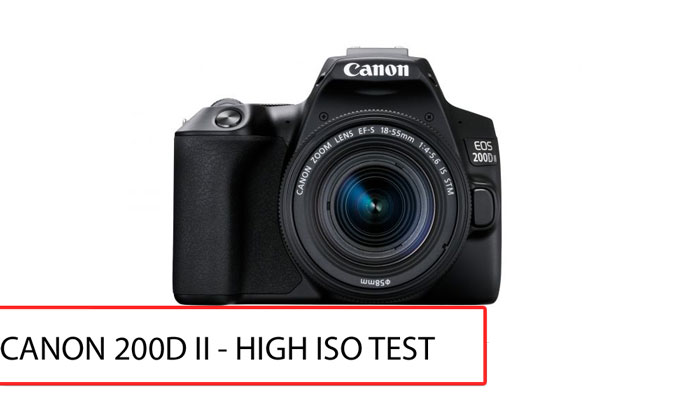
Canon SL3 / 200D II camera High ISO (via dpreview) test images are Let’s talk about the high ISO test of Canon SL3 camera and what we are able to observe through the test.
Canon SL3 RAW HIGH ISO Test
On RAW mode all the four camera (Canon SL3, Canon EOS M50, Canon 80D and Nikon D5600). After looking at the entire test, It’s very clear that Canon SL3 is controlling color noise slightly more better than Canon 80D or Canon EOS M50. But, the difference is very minimal and sometime it remains unrecognized. And finally we have Nikon D5600 camera with bit more better noise control than the other three camera.
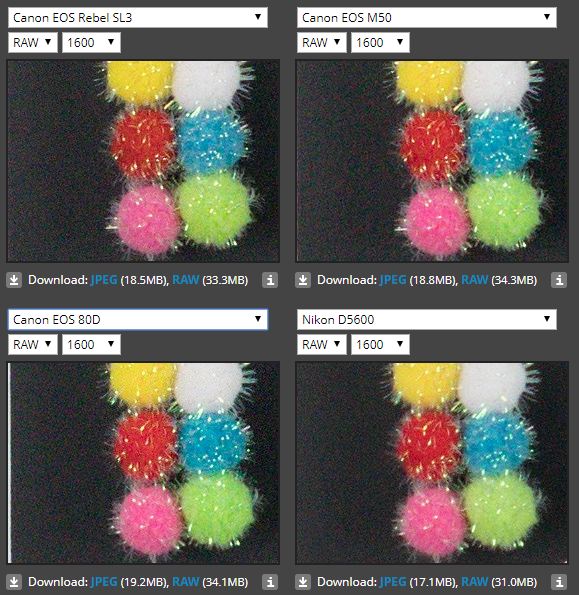
None of the camera producing usable image at ISO 3200. We have to do proper post-processing to make these camera files usable. AT ISO 3200 Canon 80D RAW file generating Maximum color noise compared to the other three, Nikon D5600 features minimal noise at ISO 3200. Canon 200D II / SL3 and Canon EOS M50 color noise level look similar.
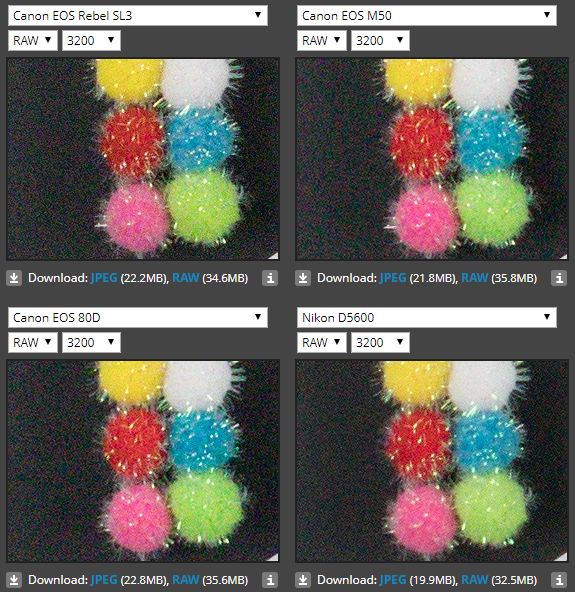
Canon SL3 JPEG File Test
JPEG High ISO Test Comparison, Canon 80D again showing more color noise in the group. At ISO 3200 Canon EOS M50 and Canon 200D II exhibit similar amount of color noise, Nikon D5600 image sample is bit more clean and usable.
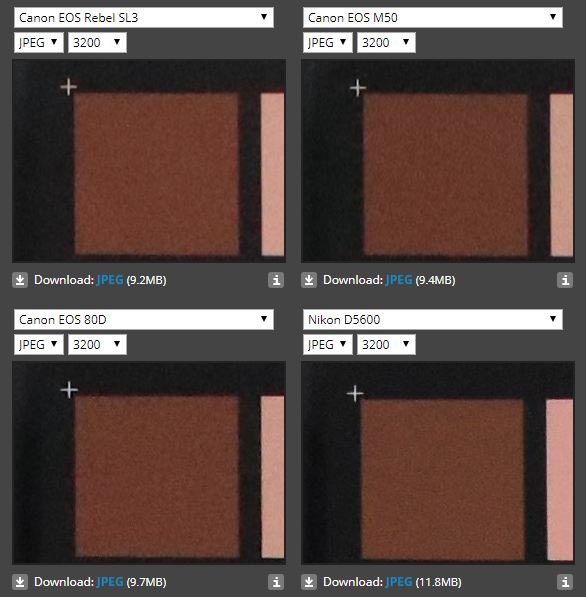
Canon 200D II / SL3 vs Others at ISO 6400 (MAX JPEG Usable ISO Limit)
ISO range in the specification sheet doesn’t matter, you have to look for usable ISO range in you camera. After looking at the High ISO JPEG files its look like usable ISO range in Canon camera is upto ISO 3200 and when you are having Nikon D5600 you can push it one-stop further upto ISO 6400.
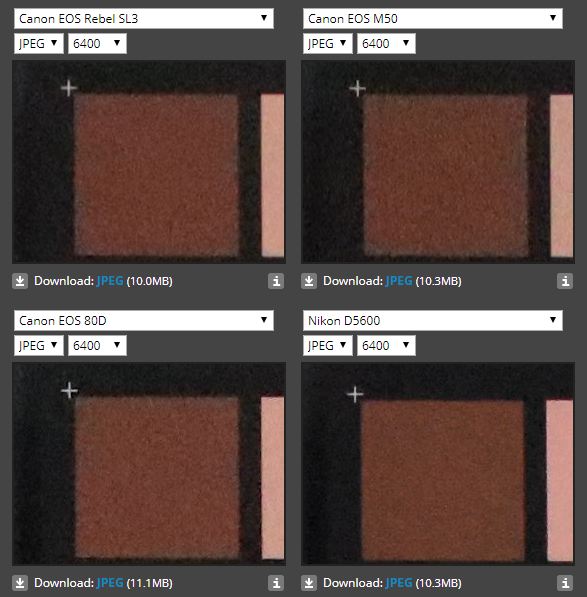
Buy Canon 200D II / SL3 camera from B&H Store
Also see – Best Lenses for Canon 200D II / Canon SL3 / Canon 250D
Follow Canon 200D II page at Facebook
For LIVE Canon SL3 News and Rumors follow us FACEBOOK | TWITTER | INSTAGRAM to get live news + Canon rumors 24X7
By admin, on May 19th, 2019
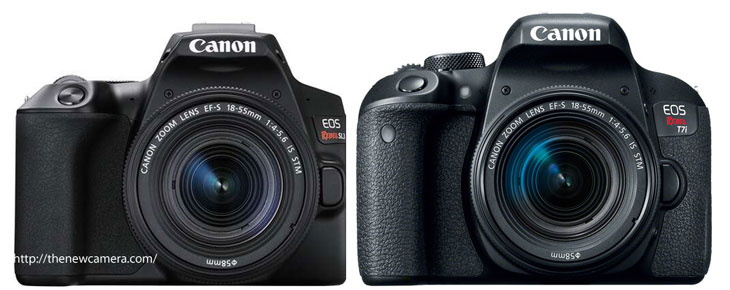
Canon 200D II / SL3 vs Canon 800D / T7i – We have done a specification comparison review between these two camera. Let’s find out which is best for you.
Sensor and other specification
| Imaging |
|
| Lens Mount |
Canon EF-S |
|
Canon EF-S |
| Camera Format |
APS-C (1.6x Crop Factor) |
|
APS-C (1.6x Crop Factor) |
| Pixels |
Actual: 25.8 Megapixel
Effective: 24.1 Megapixel |
|
Actual: 25.8 Megapixel
Effective: 24.2 Megapixel |
| Maximum Resolution |
6000 x 4000 |
|
6000 x 4000 |
| Aspect Ratio |
1:1, 3:2, 4:3, 16:9 |
|
1:1, 3:2, 4:3, 16:9 |
| Sensor Type |
CMOS |
|
CMOS |
| Sensor Size |
22.3 x 14.9 mm |
|
22.3 x 14.9 mm |
| Image File Format |
JPEG, RAW |
|
JPEG, RAW |
| Bit Depth |
14-Bit |
|
14-Bit |
| Image Stabilization |
Digital, 5-Axis (Video Only) |
|
Digital, 5-Axis (Video Only) |
The sensor size, megapixels are almost same and even the ISO range of the camera is exactly same. Both sensor are using plain CMOS sensor tech, so more or less you will be getting same image quality from both the camera.
Exposure Modes, Metering Mode and Continuous shooting speed
| ISO Sensitivity |
Auto, 100 to 25600 (Extended: 100 to 51200) |
|
Auto, 100 to 25600 (Extended: 100 to 51200) |
| Shutter Speed |
Mechanical Shutter
1/4000 to 30 Second
Bulb Mode |
|
1/4000 to 30 Seconds
Bulb Mode |
| Metering Method |
Center-Weighted Average, Evaluative, Partial, Spot |
|
Center-Weighted Average, Evaluative, Partial, Spot |
| Exposure Modes |
Aperture Priority, Manual, Program, Shutter Priority |
|
Aperture Priority, Manual, Program, Shutter Priority |
| Exposure Compensation |
-5 to +5 EV (1/3, 1/2 EV Steps) |
|
-5 to +5 EV (1/3, 1/2 EV Steps) |
| Metering Range |
1 to 20 EV |
|
1 to 20 EV |
| White Balance |
Auto, Cloudy, Custom, Daylight, Flash, Fluorescent (White), Shade, Tungsten |
|
Auto, Cloudy, Custom, Daylight, Flash, Fluorescent (White), Shade, Tungsten |
| Continuous Shooting |
Up to 5 fps at 24.1 MP for Unlimited Exposures (JPEG)
Up to 5 fps at 24.1 MP for up to 10 Exposures (Raw) |
|
Up to 6 fps at 24.2 MP for up to 190 Exposures (JPEG)
Up to 6 fps at 24.2 MP for up to 21 Exposures (Raw)
Up to 3 fps at 24.2 MP for up to 190 Exposures (JPEG)
Up to 3 fps at 24.2 MP for up to 21 Exposures (Raw) |
| Interval Recording |
Yes |
|
Yes |
| Self Timer |
2/10-Second Delay |
|
2/10-Second Delay |
We have a lot of common specification between the two camera. As you can see in specification table the continuous shooting speed of the Canon T77 / 800D is 1 FPS more compared to Canon 200D but limited to 190 shots. With Canon 200D you are getting bit extra buffer and unlimited frames option till card is full.
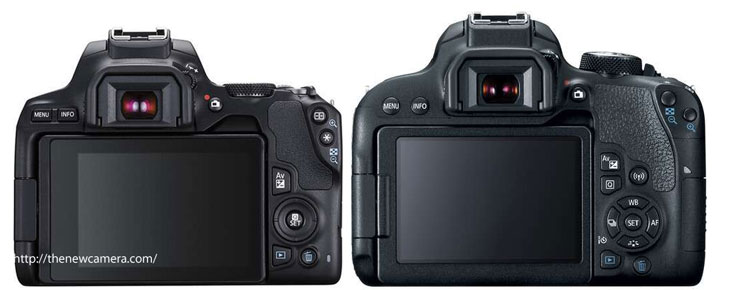
Video mode Comparison – Canon 200D II / SL3 vs Canon 800D / T7i
| Recording Modes |
MP4/H.264
UHD 4K (3840 x 2160) at 23.976p/25p [120 Mb/s]
Full HD (1920 x 1080) at 25p/29.97p/50p/59.94p [12 to 60 Mb/s]
HD (1280 x 720) at 50p/59.94p [26 Mb/s] |
|
MP4/H.264
Full HD (1920 x 1080) at 59.94p [60 Mb/s]
Full HD (1920 x 1080) at 23.976p/29.97p [30 Mb/s]
Full HD (1920 x 1080) at 29.97p [12 Mb/s]
HD (1280 x 720) at 59.94p [26 Mb/s]
HD (1280 x 720) at 29.97p [4 Mb/s]
SD (640 x 480) at 29.97p [9 Mb/s]
SD (640 x 480) at 29.97p [3 Mb/s]
MOV/iFrame
Full HD (1920 x 1080) at 29.97p [90 Mb/s] |
| External Recording Modes |
4:2:2 10-Bit
DCI 4K (4096 x 2160) at 23.976p/29.97p
Full HD (1920 x 1080) at 59.94i/59.94p
SD (640 x 480) at 59.94p |
|
|
| Recording Limit |
Up to 29 Minutes, 59 Seconds |
|
Up to 29 Minutes, 59 Seconds |
| Video Encoding |
NTSC/PAL |
|
NTSC/PAL |
| ISO Sensitivity |
100 to 12800 |
|
Auto/Manual: 100 to 12800 (Extended: 25600) |
| Audio Recording |
Built-In Microphone (Stereo)
External Microphone Input (Stereo) |
|
Built-In Microphone (Stereo)
External Microphone Input |
Canon 200D II / Canon SL3 camera features 4K video recording option and you can also record 10Bit videos via HDMI port.Canon 800D / T7i camera limited to full HD video recording mode only. However as we all know that the 4K video recording mode of Canon 800D / T7i is not so usable. Due to the crop and CDAF issue.
Canon 200D II / SL3 vs Canon 800D / T7i – Focus and other feature
| Focus Type |
Auto and Manual Focus |
|
Auto and Manual Focus |
| Focus Mode |
Continuous-Servo AF (C), Manual Focus (M), Single-Servo AF (S) |
|
Automatic (A), Continuous-Servo AF (C), Manual Focus (M), Single-Servo AF (S) |
| Autofocus Points (Phase) |
Phase Detection: 9 (9 Cross-Type) |
|
Phase Detection: 45 (45 Cross-Type) |
| DPAF Points |
3975 AF Points |
|
-Unknown |
Canon 200D II / SL3 feature revised sensor, the sensor is optimize to do more better AF performance compared to existing Canon SL2 / 200D camera. The total number of on sensor AF points are further divided 143 zones so users can select it easily without an issue.
Battery and Physical
| Battery |
1 x LP-E17 Rechargeable Lithium-Ion, 7.2 VDC, 1040 mAh (Approx. 1630 Shots) |
|
1 x LP-E17 Rechargeable Lithium-Ion, 7.2 VDC, 1040 mAh |
| Dimensions (W x H x D) |
4.82 x 3.65 x 2.75″ / 122.4 x 92.6 x 69.8 mm |
|
5.2 x 3.9 x 3″ / 131 x 99.9 x 76.2 mm |
| Weight |
15.84 oz / 449 g (Body with Battery and Memory) |
|
1.17 lb / 532 g |
Canon T7i camera features 820 shots per charge and with Canon 200D II / SL2 camera you can capture 1040 shots per charge. The 200D II is more light weight and bit small compared to 800D.
Verdict of Canon 200D II / SL3 vs Canon 800D / T7i:
Canon 200D II / SL3 camera is giving you next generation of DPAF system which will help you to get fast AF in still(Liveview) and video mode and a option to record 4K video with 10bit output . Not only that, you are also getting bit more battery life with light-weight body. We highly recommend you to go with Canon 200D II / SL3 camera.
Get Canon 800D / T7i camera from Amazon | B&H
Buy Canon 200D II / SL3 camera from B&H Store
Also see – Best Lenses for Canon 200D II / Canon SL3 / Canon 250D
By admin, on May 18th, 2019
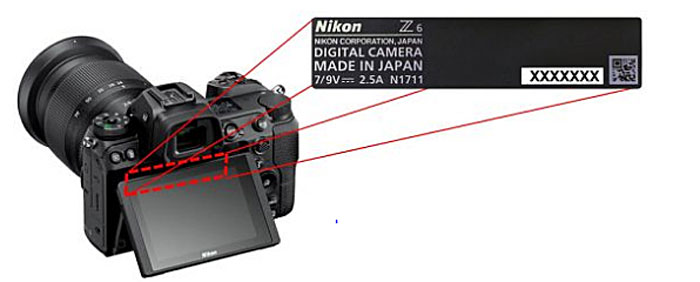
Nikon Z6 and Z7 few units are facing some serious issue. According to Nikon, few models of Nikon Z6 and Z7 camera have faulty VR unit. So, users will not get the proper feature they are paying off.
Check out your Nikon Z6 and Z7 camera serial number
Nikon issues a Technical Service Advisory for Users of the Nikon Z 6 and Z 7 Cameras.
Nikon Press Release
MAY 16, 2019
Thank you for choosing Nikon for your photographic needs.
Issue
While Nikon has taken great measures to assure the high quality expected of Nikon products, it has come to our attention that the vibration reduction (VR) feature in some Nikon Z 6 and Z 7 cameras may not function fully. We sincerely apologize for any inconvenience this may have caused.
Resolution
Nikon has resolved this by making available corrective service for affected Z 6 and Z 7 cameras free of charge, including the cost of shipping an affected Z 6 and Z 7 camera to Nikon as well as its return, even if your Z 6 or Z 7 camera warranty has expired.
Identifying Affected Products and Requesting Service
To determine whether your camera is one of those affected, please click the appropriate Check Serial Number button below and enter the serial number for your Z 6 or Z 7 camera as indicated. If your camera is one of those affected, instructions for requesting service, including receiving your free shipping label, will be displayed onscreen. You may also contact Nikon Customer Relations by visiting www.nikonusa.com\support for assistance. If your Z 6 or Z 7 camera is not one of those affected, this will be displayed onscreen and you may continue using your camera without concern for this issue.
Check Serial Number (Z 6 camera customers)
Check Serial Number (Z 7 camera customers)
To locate your camera’s serial number, open the camera’s monitor on the back of the camera and the serial number will be the 7-digit number printed on the label affixed to the camera body, as indicated by the red frame in the image above (the Z 6 camera is represented in the image).
Please understand that Nikon will collect personal information as necessary in order to facilitate the service and shipping of affected cameras. This information will not be used for any other purposes.
Once again, thank you for choosing Nikon for your photographic needs.
|
KEEP THIS BLOG ALIVE - Support New Camera Buy Canon Lenses, Buy Music CD or Digital Camera at amazon it helps this site, and you do not pay anything extra, it is just a way to help support this site.

|


















